| Vintage Pulp | Aug 9 2012 |


The above Special Detective-Crime from August 1972 promises tales of thrill-seeking wives and more, but how can we possibly get past the cover? Look at this poor guy. He told his hairstylist to turn him into Rod Stewart but instead she turned him into a Ukrainian field hockey player. The cops are screaming at him to let the woman go, and he’s screaming back that he wants his bangs redone. It’s not going to end well.
| The Naked City | Jul 31 2012 |

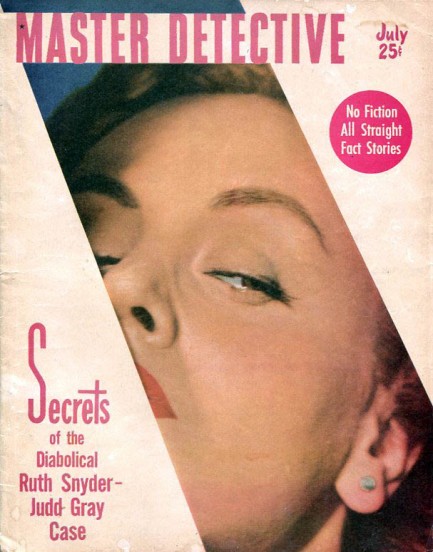
Above, a cover of Master Detective from July 1949, inside of which is a story on Ruth Snyder. In March 1927 Snyder garroted her husband with the help of her lover, a corset salesman named Henry Judd Gray. The couple had been after insurance money, but instead they were caught, tried, and sentenced to death by means of electrocution. On the day of the event, which took place at Sing Sing Prison, a photographer named Tom Howard entered the execution chamber as a witness. He was under assignment for the New York Daily News, but was actually based in Chicago, which meant he was unknown to prison authorities in the New York area. That was important, because Howard’s assignment was to illegally take a photo of Ruth Snyder’s execution, which had considerable tabloid value because she would be the first woman put to death at Sing Sing since 1899. Howard was ingeniously prepared—he had strapped a camera to his ankle, and had fed a shutter release up one pant leg to an accessible point inside his suit jacket. At the moment the executioner threw the switch, Howard lifted his pant leg and snapped the blurry photo below, which appeared the next day in the New York Daily News under a huge header that read simply: Dead! The issue was a sensation, the image became iconic, and Howard became nationally famous.
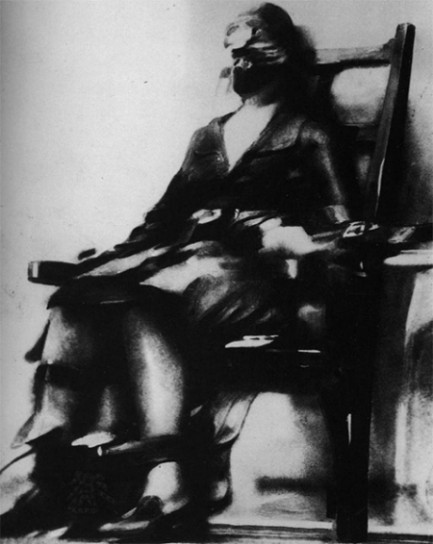
| Vintage Pulp | Mar 21 2012 |

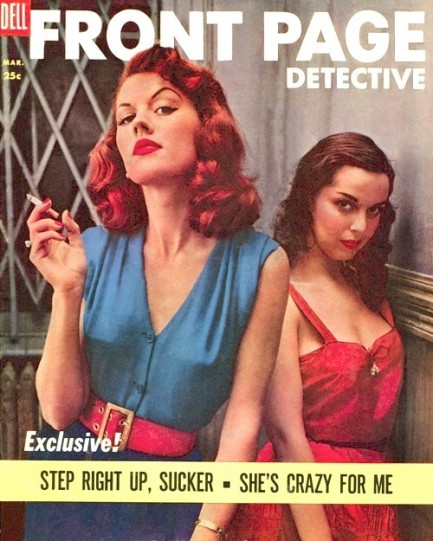
Above, Front Page Detective with two great cover models that reappear in panel nine below, posing for Stanley Harrison’s exposé “The Story Behind the Texas Girl Racket,” which, as you might guess, has to do with prostitution (specifically, in and around the Fort Worth and Trinity River area). Inside the magazine you find more models posing for more crime stories, a few actual perp shots, and a couple of nice illustrations. All below, March 1955.
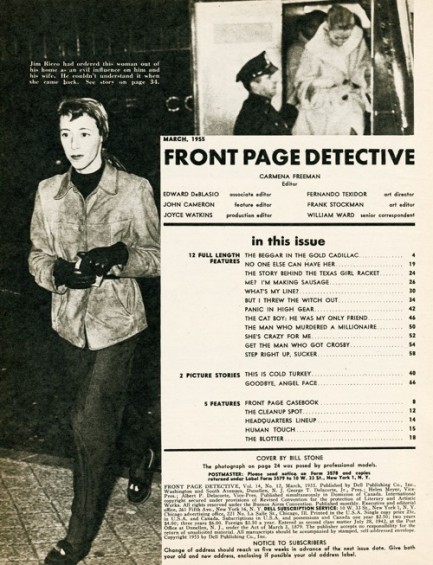
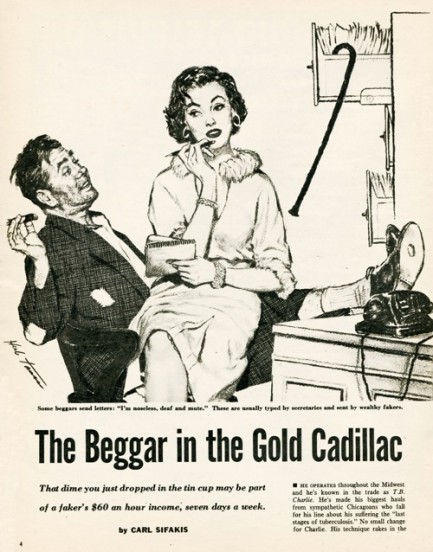
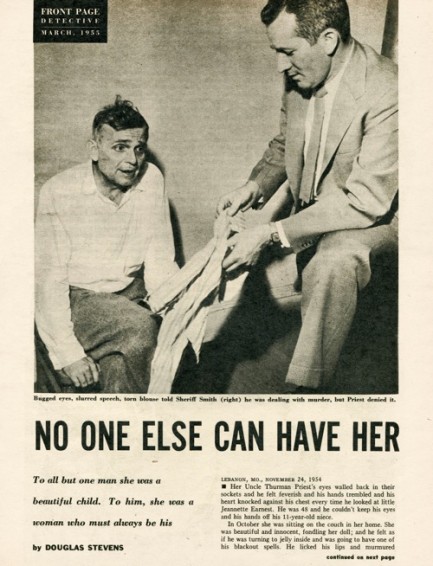
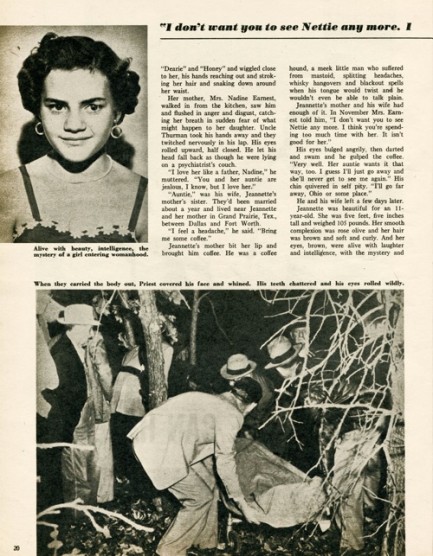
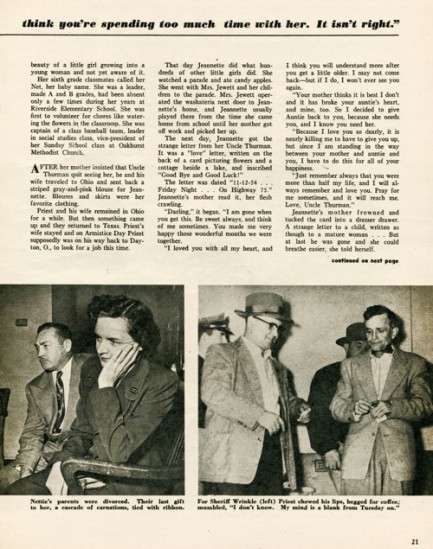
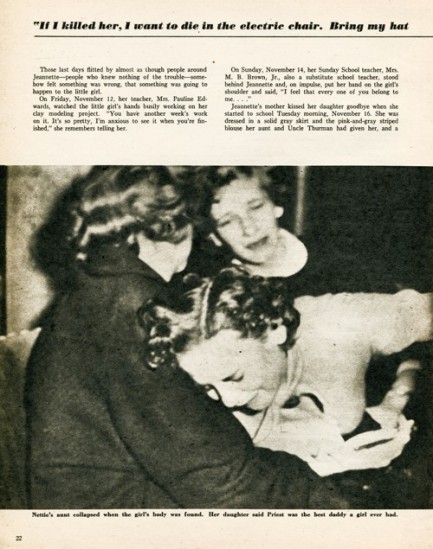
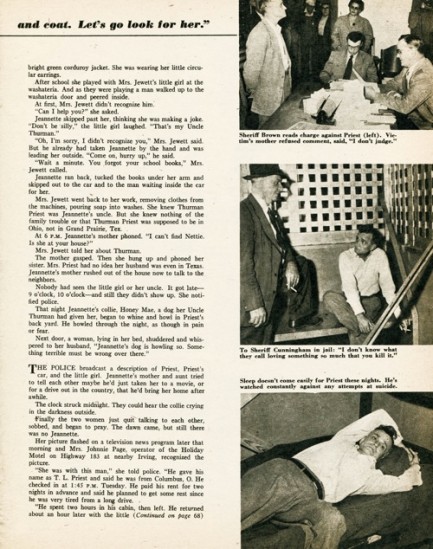
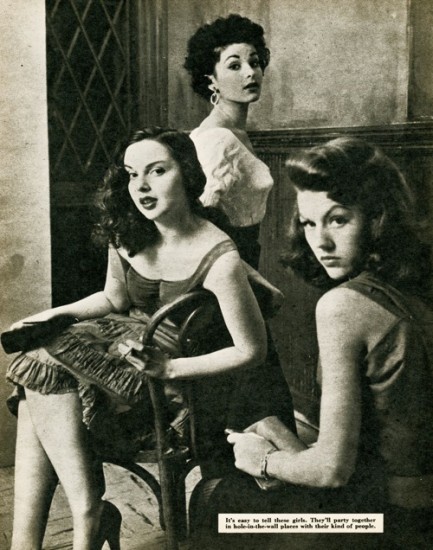
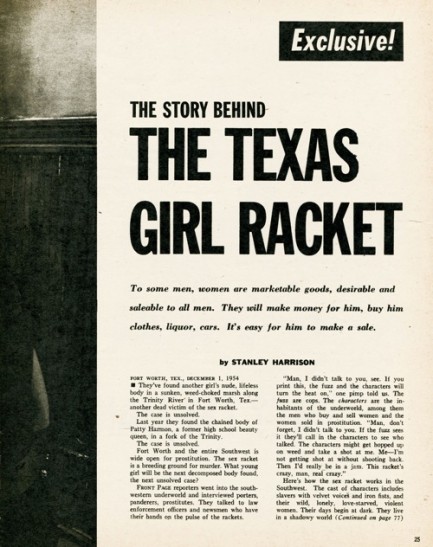
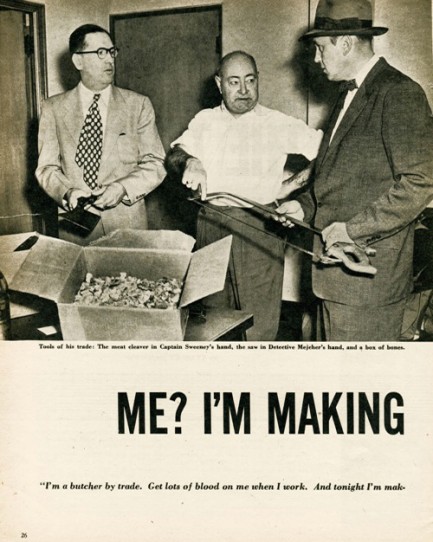
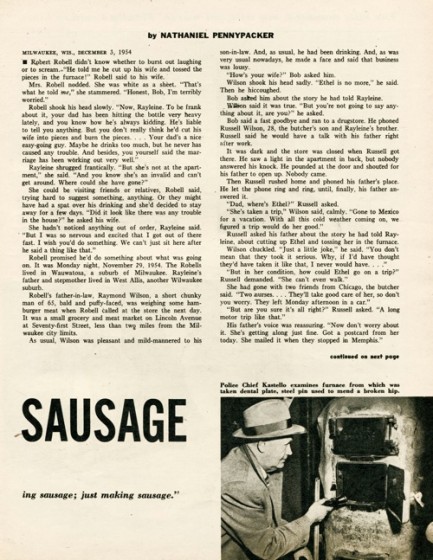
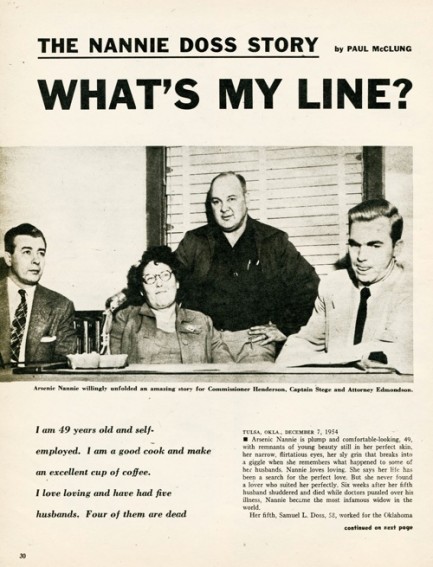
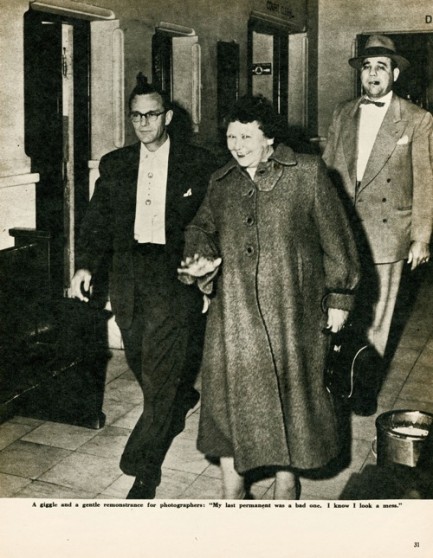
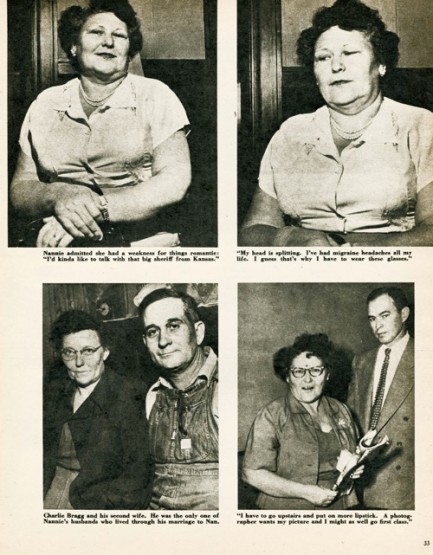
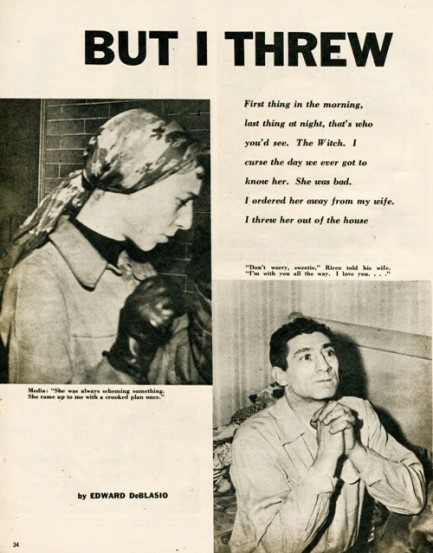
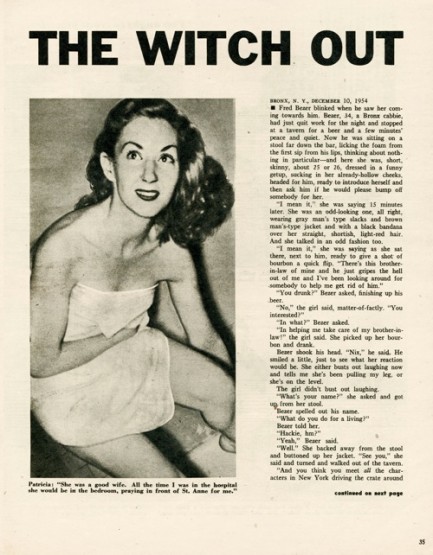
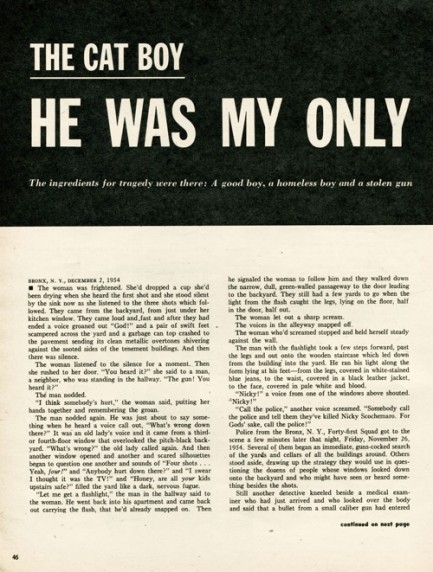
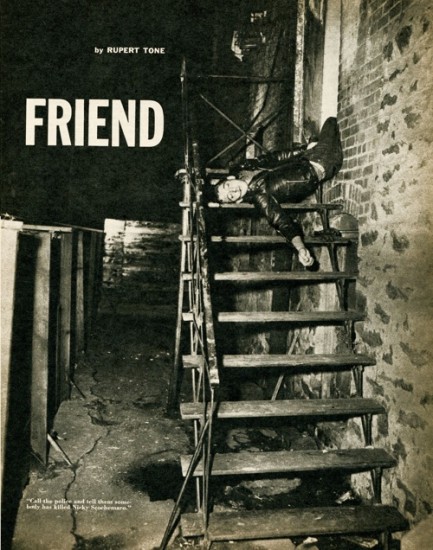
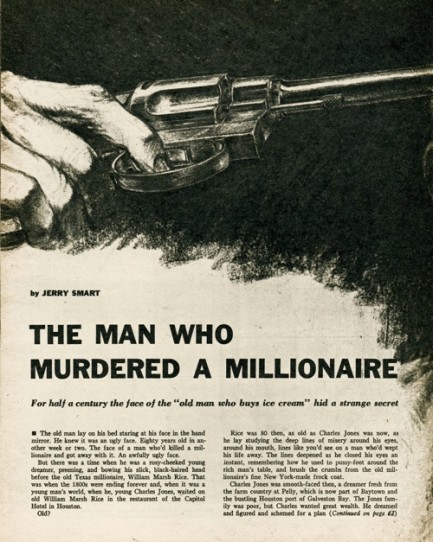
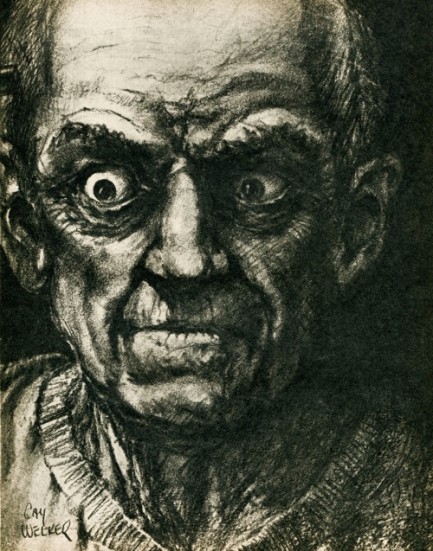
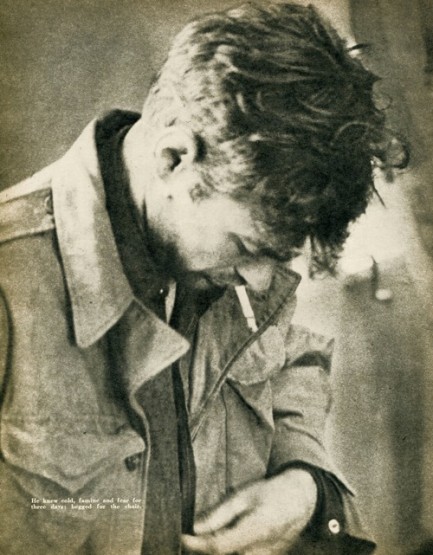
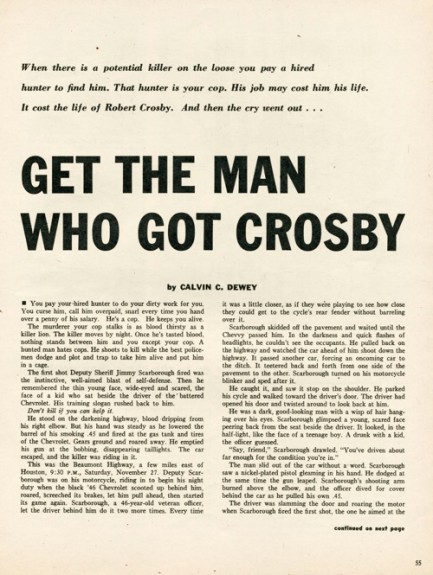
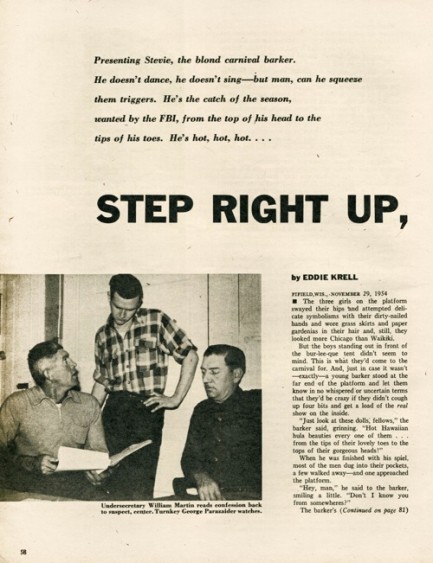

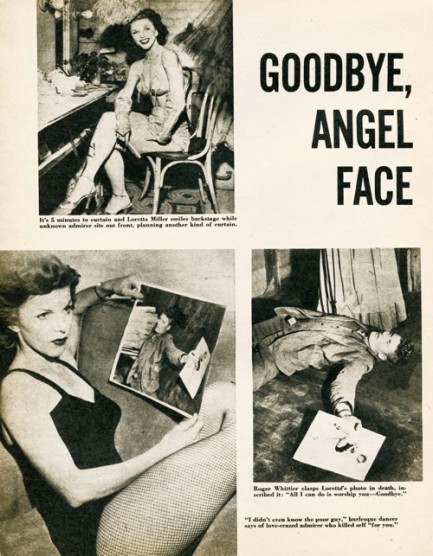
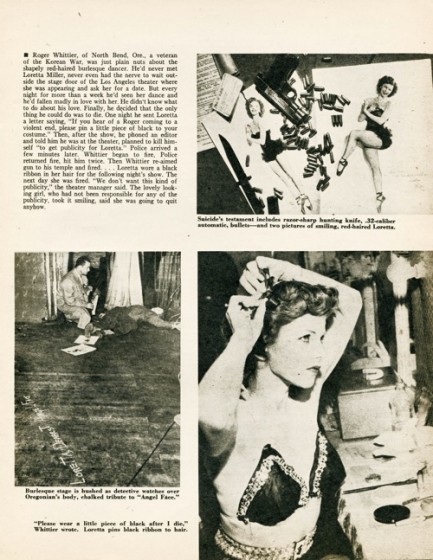
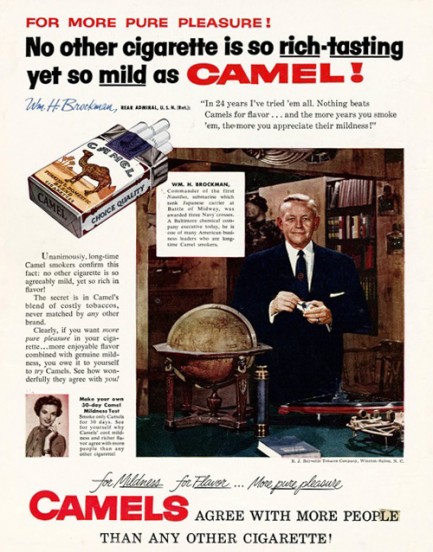
| The Naked City | Vintage Pulp | Feb 16 2012 |

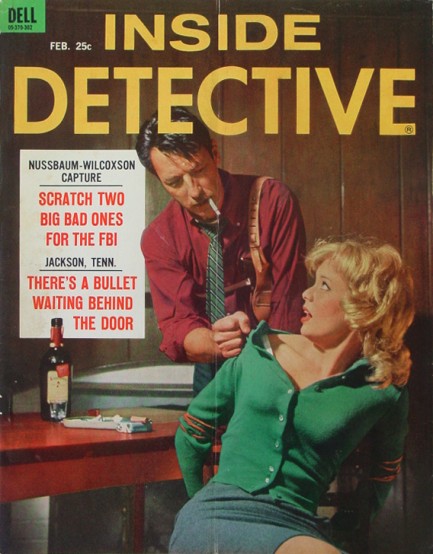
Above is an Inside Detective published February 1963, containing a feature on Albert Nussbaum and Bobby Wilcoxson, a pair of armed robbers who were among the most sought after fugitives of their time. Nussbaum was the brains of the operation, and was adept at chess and photography, and was a locksmith, gunsmith, pilot, airplane mechanic, welder, and draftsman. With his spatial and mechanical aptitude, many careers would have been available to him, but he chose instead to become a bank robber. Predictably, he was good at that too.
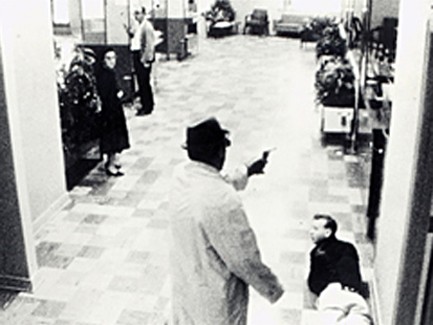 Wilcoxson was arrested soon afterward in Maryland, and both robbers were convicted of murder. But where Wilcoxson got the chair (a sentence which was commuted to life upon appeal), Nussbaum got forty years, which made him eligible for parole.
Wilcoxson was arrested soon afterward in Maryland, and both robbers were convicted of murder. But where Wilcoxson got the chair (a sentence which was commuted to life upon appeal), Nussbaum got forty years, which made him eligible for parole.| The Naked City | Jan 4 2012 |

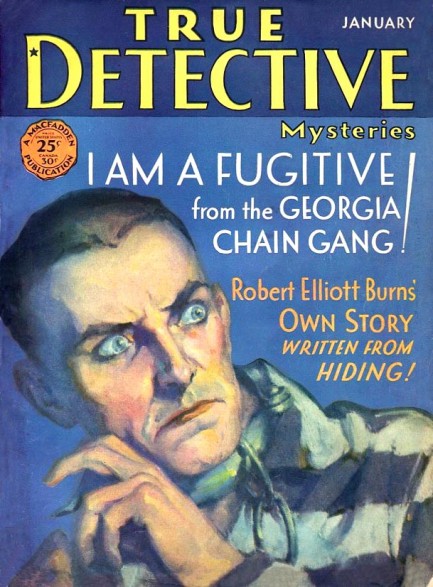
Dalton Stevens’ cover for this January 1931 issue of True Detective looks a bit like a horror illustration, but it's actually supposed to represent Robert E. Burns, who in 1922 helped rob a Georgia grocery, earned himself 6 to 10 at hard labor, but escaped and made his way to Chicago, where he adopted a new identity and rose to success as a magazine editor. Years later, when he tried to divorce the woman he had married, she betrayed him to Georgia authorities, and what followed was a legal battle between Georgia courts and Chicago civic leaders, with the former wanting Burns extradited, and the latter citing his standing in the community and calling for his pardon. Burns eventually went back to Georgia voluntarily to serve what he had been assured would be a few months in jail, but which turned into more hard time on a chain gang.
Angered and disillusioned, Burns escaped again, and this time wrote a book from hiding, which True Detective excerpts in the above issue and several others. This was a real 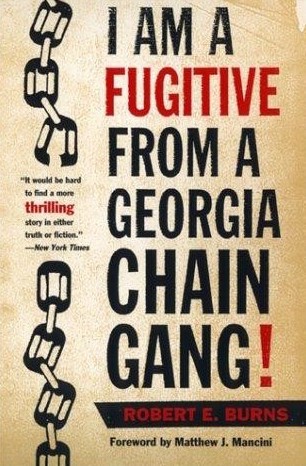 scoop for the magazine—it was the first to publish Burns’ harrowing tale. The story generated quite a bit of attention, and Vanguard Press picked it up and published it as I Am a Fugitive from a Georgia Chain Gang, which led directly to Warner Brothers adapting the tale into a hit 1932 motion picture starring Paul Muni. The movie differed somewhat from the book, of course, which differed somewhat from reality (Burns himself admitted this later), but his account cast a withering light on the chain gang system. The exposure helped chain gang opponents, who claimed—with some veracity—that the practice was immoral because it originated with the South's need to replace its slave labor after defeat in the U.S. Civil War.
scoop for the magazine—it was the first to publish Burns’ harrowing tale. The story generated quite a bit of attention, and Vanguard Press picked it up and published it as I Am a Fugitive from a Georgia Chain Gang, which led directly to Warner Brothers adapting the tale into a hit 1932 motion picture starring Paul Muni. The movie differed somewhat from the book, of course, which differed somewhat from reality (Burns himself admitted this later), but his account cast a withering light on the chain gang system. The exposure helped chain gang opponents, who claimed—with some veracity—that the practice was immoral because it originated with the South's need to replace its slave labor after defeat in the U.S. Civil War.
Burns continued to live life on the run, but was eventually arrested again, this time in New Jersey. However, the governor of the state refused to extradite him. The standoff meant Burns was, in practical terms, a free man. That practical freedom was made official in 1945 when he was finally pardoned in Georgia, and his literary indictment of the chain gang system helped bring about its demise. Well, sort of—it returned to the South in 1995, was quickly discontinued after legal challenges, but may yet be reintroduced as politicians push for more and more extreme punishments to bolster their tough-on-crime credentials.
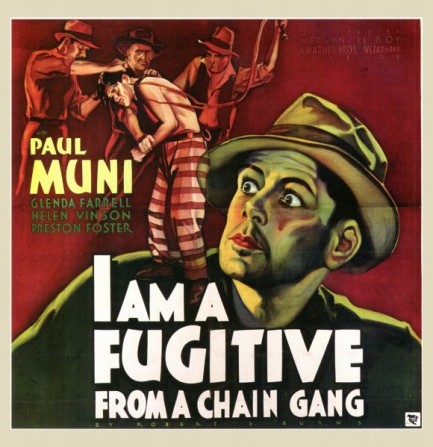
| The Naked City | Dec 17 2011 |

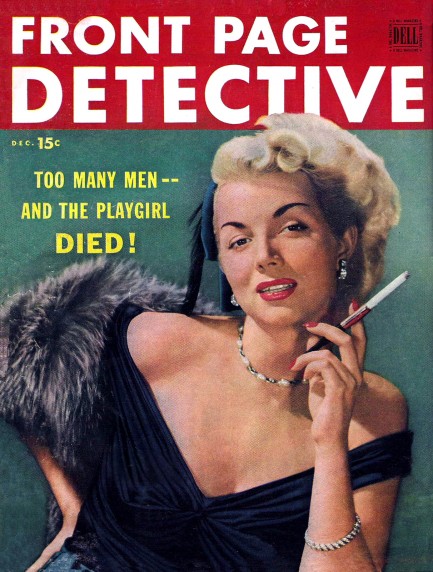
December 1949’s Front Page Detective offers up numerous tales of vice and murder. Each story begins with an art spread, some photographic and some hand drawn. We thought they were nice, so we posted several below. The playgirl referred to on the cover is Eddis Mae Reed, a Long Beach 40-year-old who was murdered in a shack on Seaside Avenue. The cover model, with her cigarette holder and fur wrap, is nothing like the Eddis Mae Reed described in the story. That Eddis Mae was a working class woman who liked the rough hewn men that populated Long Beach, back then a seemingly endless landscape of oil derricks.
 After she was found strangled, beaten, and with a bra stuffed down her throat, detectives questioned oilworkers, longshoremen, and dockworkers, as well as the bartenders and cooks in the waterfront saloons she frequented, before finally focusing their attention on a sailor named William Dryman. When police picked him up he confessed right away to killing Reed. His motive? Jealousy.
After she was found strangled, beaten, and with a bra stuffed down her throat, detectives questioned oilworkers, longshoremen, and dockworkers, as well as the bartenders and cooks in the waterfront saloons she frequented, before finally focusing their attention on a sailor named William Dryman. When police picked him up he confessed right away to killing Reed. His motive? Jealousy.
Even though he was at sea for months at a time, and he knew Reed was not a one-man woman, he became obsessed with her. When he visited her shack unannounced one night he heard her entertaining another man and became furious. He didn’t confront her then, though. He came back the next day, when she was alone and unprotected. He told police: “I told her what I’d do if I caught her cheating. I’d do it all over again.” Front Page Detective attributes Reed’s death to “too many men.” Well, that’s one way to look at it. The judge, on the other hand, blamed the killer, not the victim, and sent William Dryman down for five-to-life.
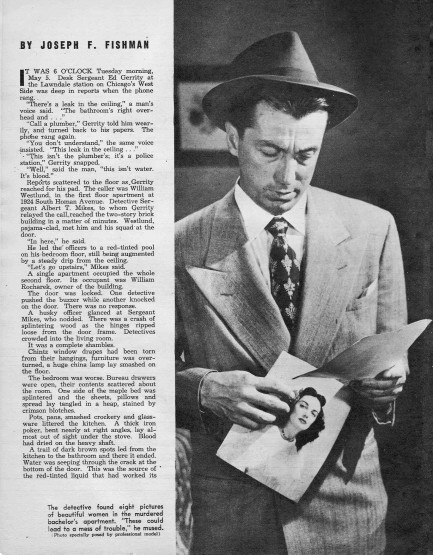
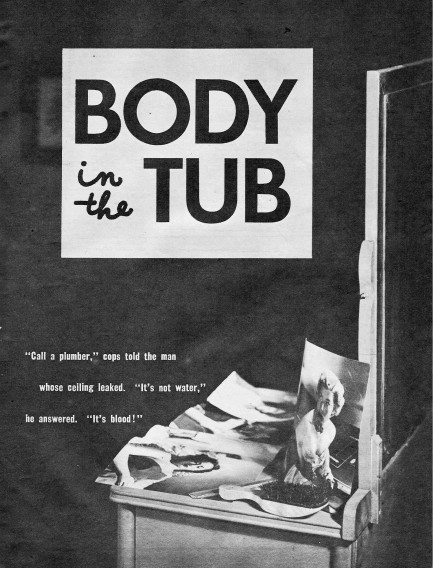
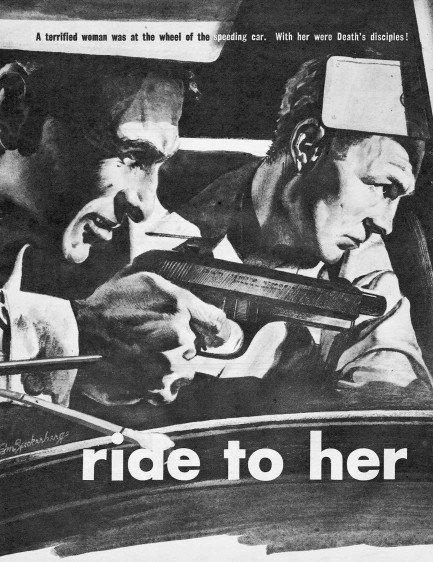
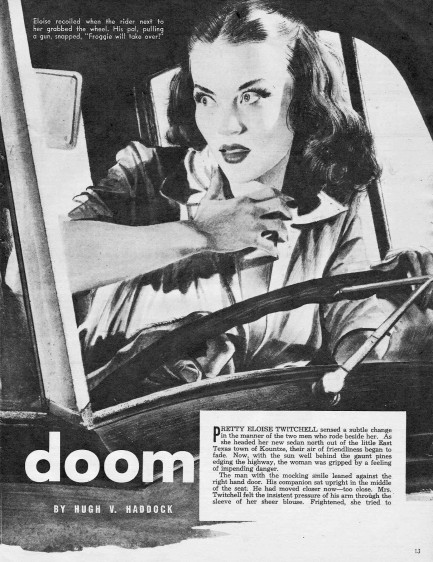
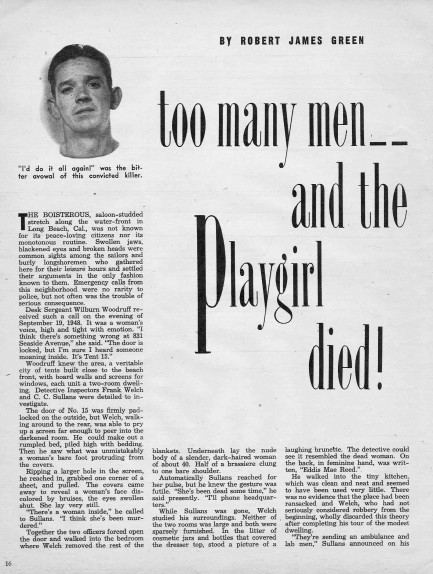
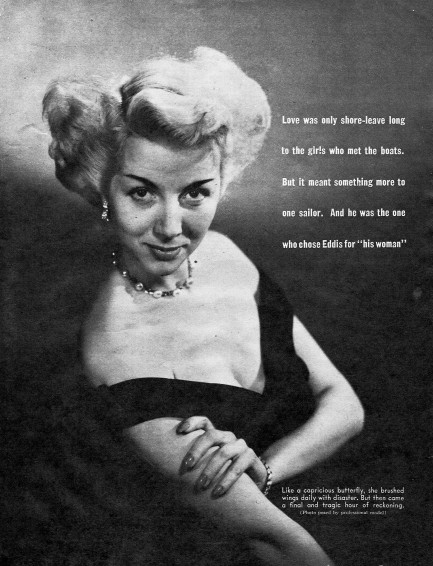
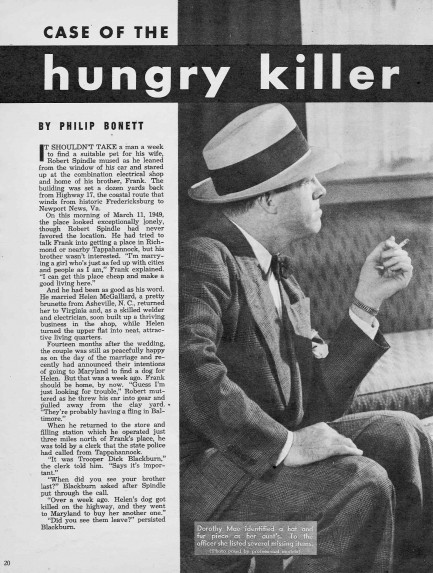
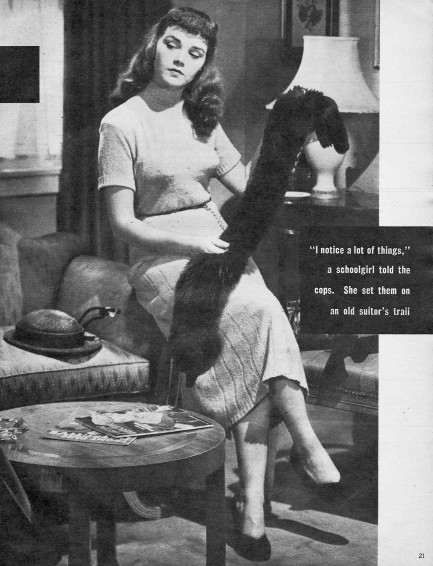
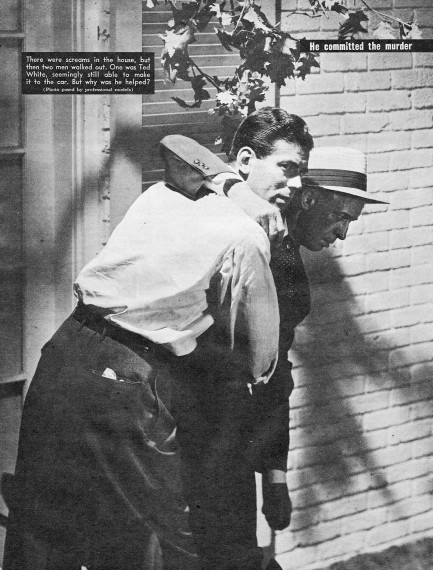
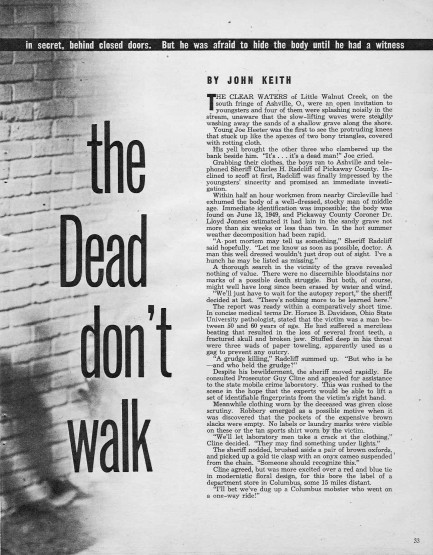
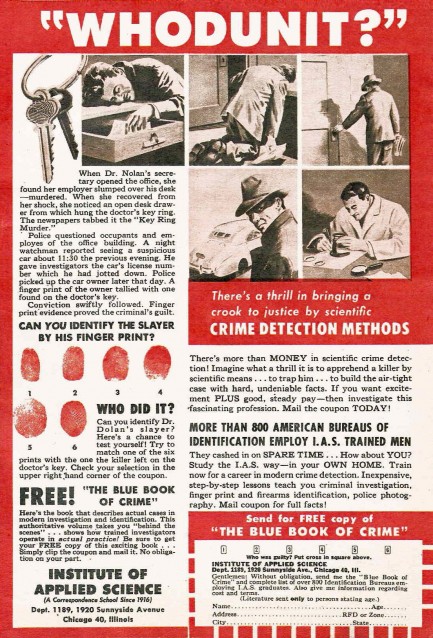
| Vintage Pulp | Dec 11 2011 |

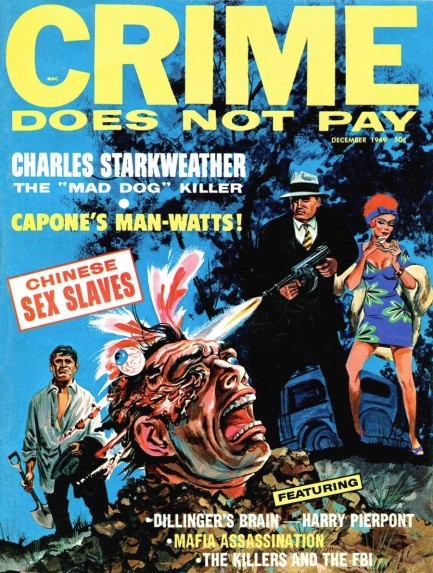
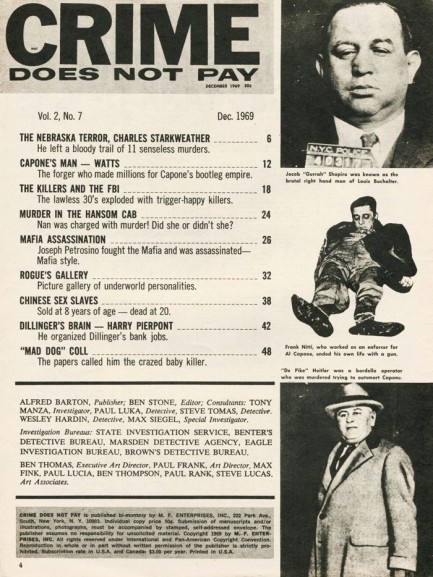
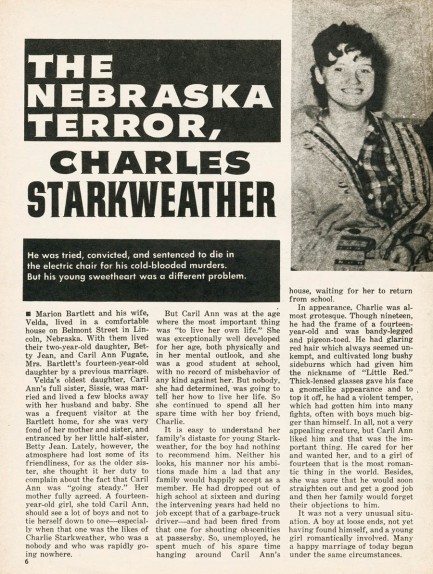
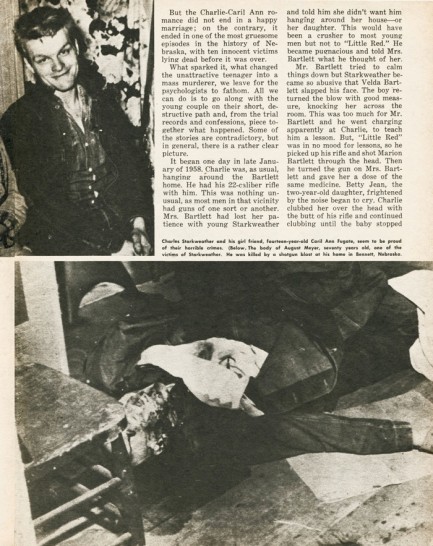
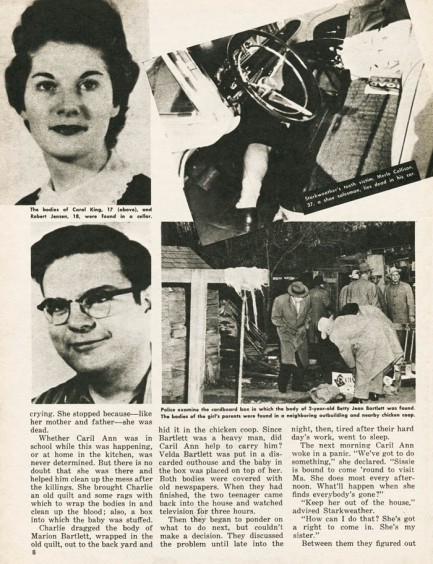
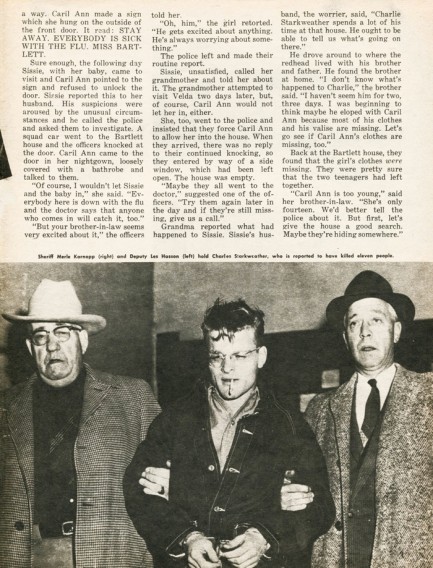
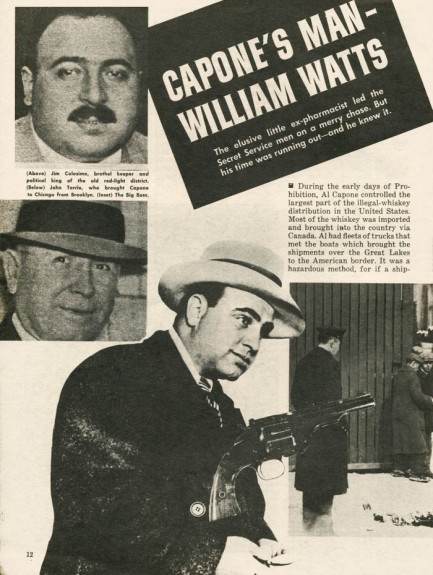
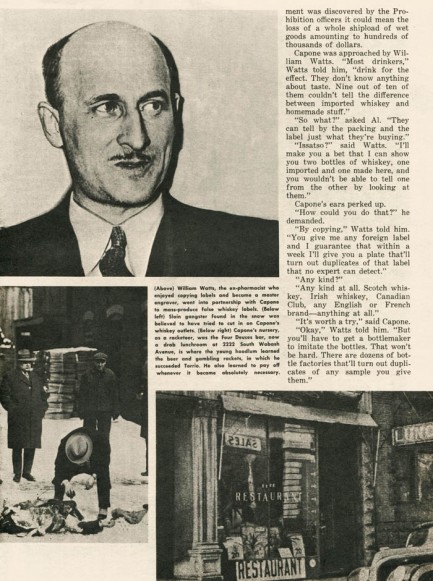
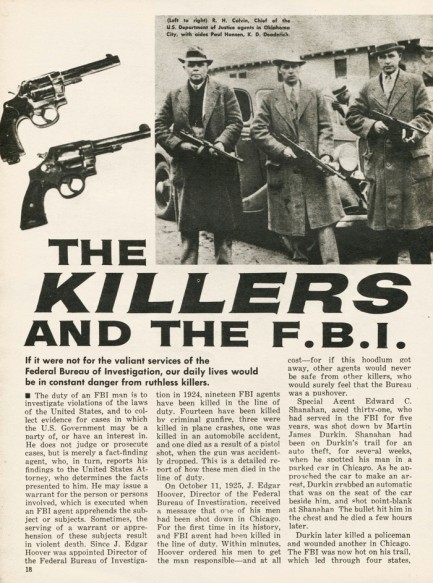


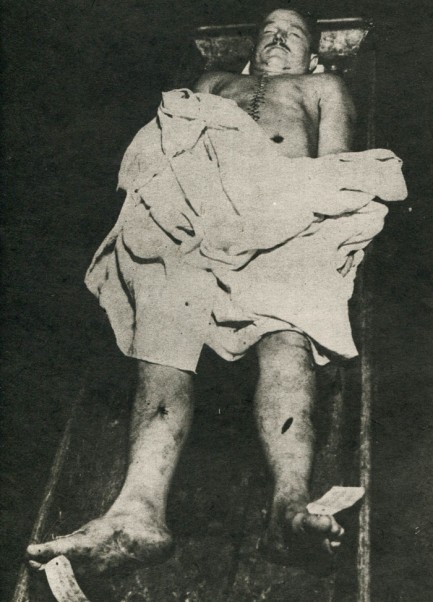
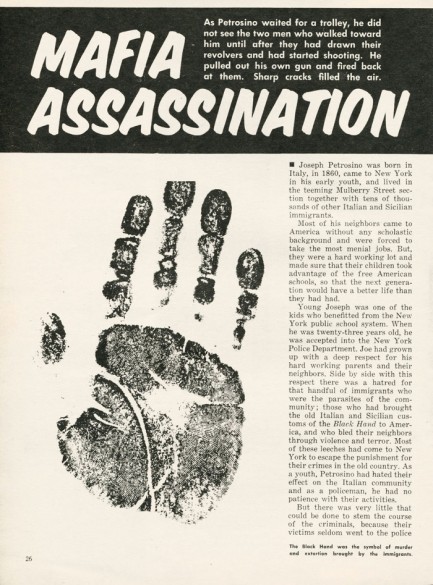
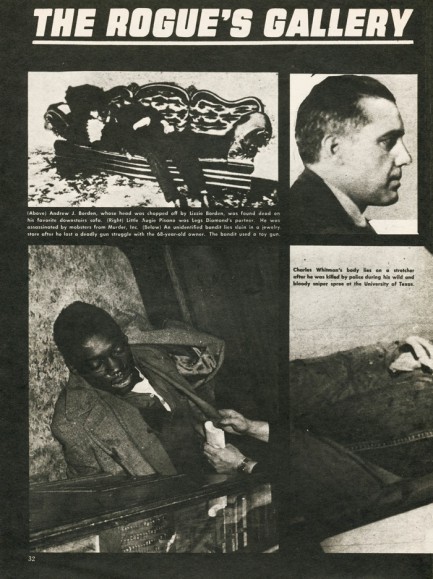
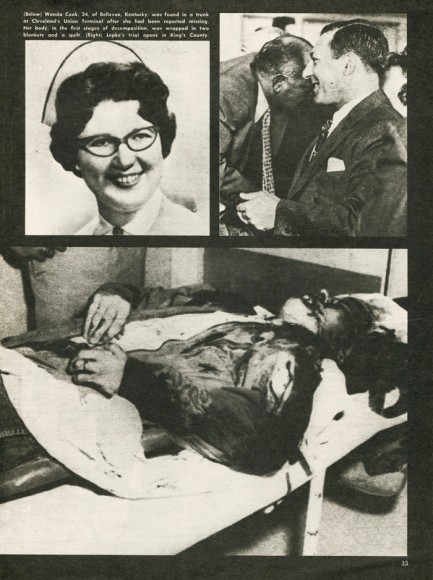
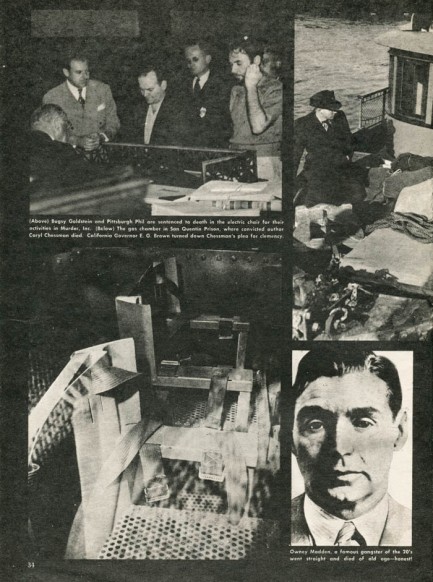
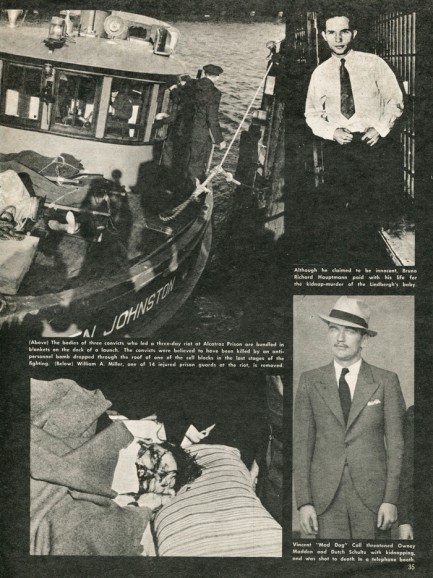
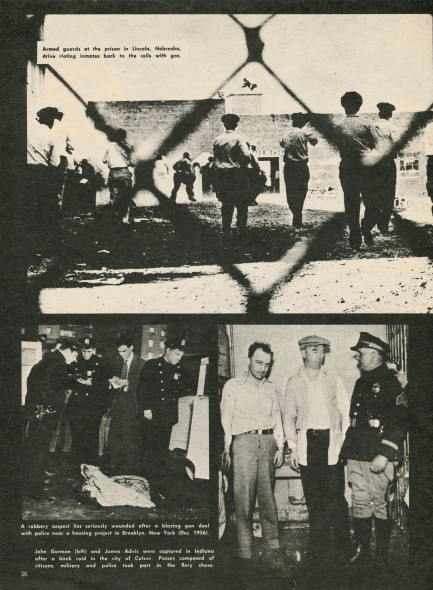
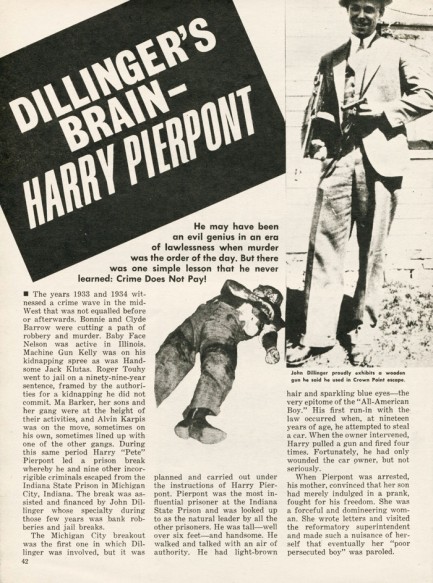
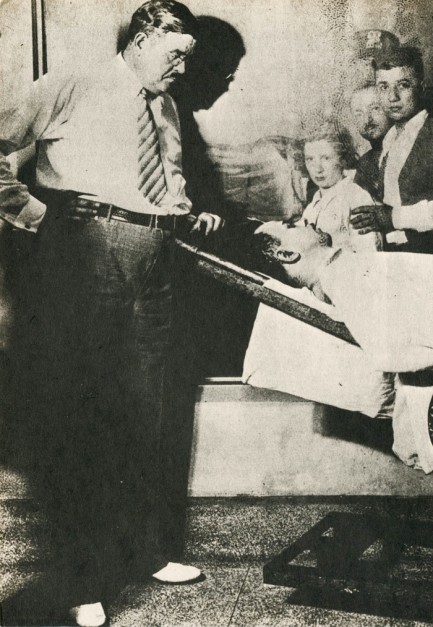
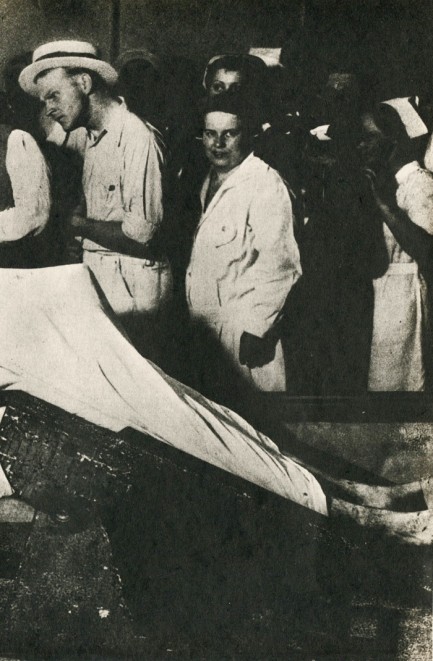
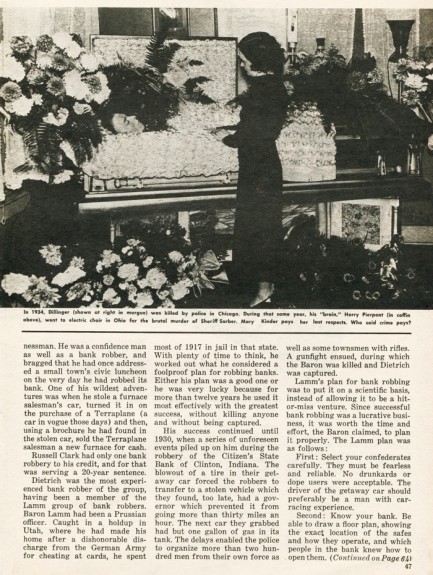

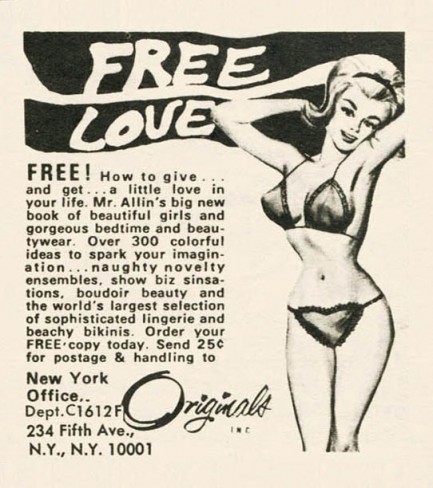
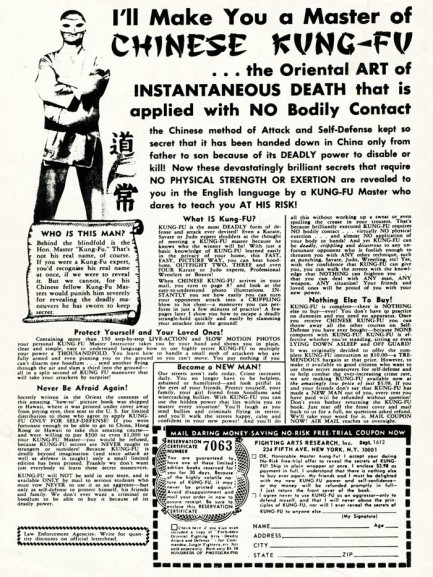
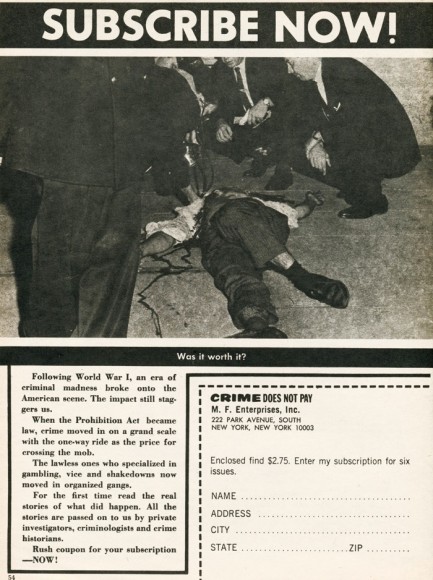
| Vintage Pulp | Dec 1 2011 |

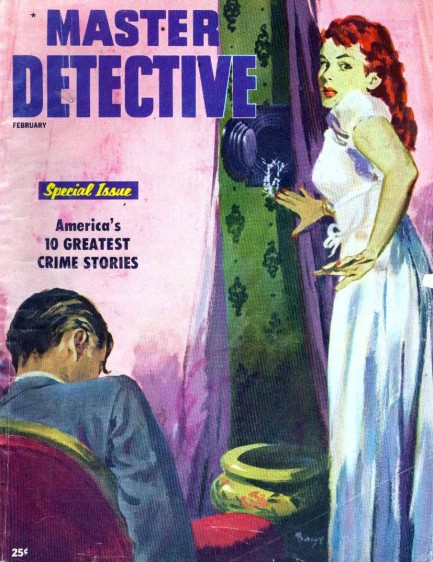
The woman who finds herself standing over a dead (or possibly drugged) man is a classic motif in true crime magazine cover art. Sometimes the woman is responsible for what's happened, while other times she simply has the bad luck to stumble into the situation. Covers of this type, you're probably already aware, fall under the category of Good Girl Art, with the “good” referring to the woman’s appearance, rather than her morals. Above and below are unlucky thirteen examples from mid-century crime magazines, with art from Barye Phillips, Jay Scott Pike, George Gross, Jack Rickard, and others. We borrowed one of these from Fringepop, and most of the rest we culled from online auctions where they’ve been languishing for months if not years. Feel inclined to collect a few classic true crime magazines? There are plenty of choices out there right now. Thanks to the original uploaders. 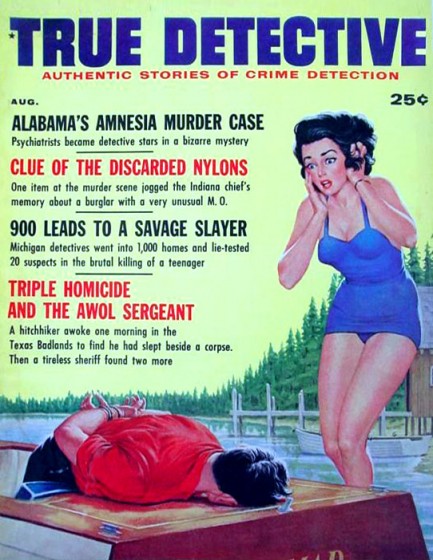
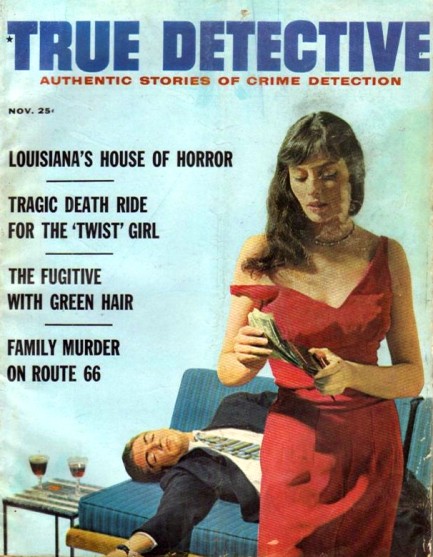
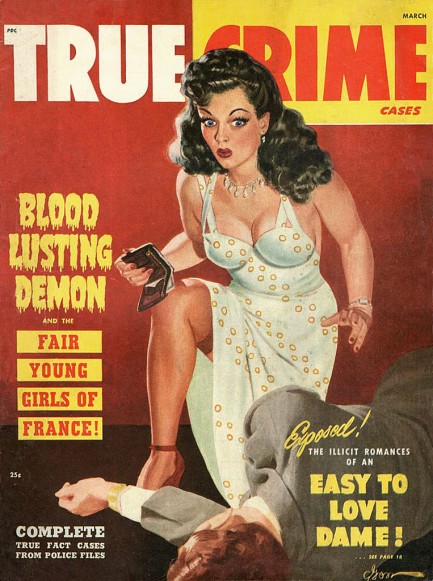
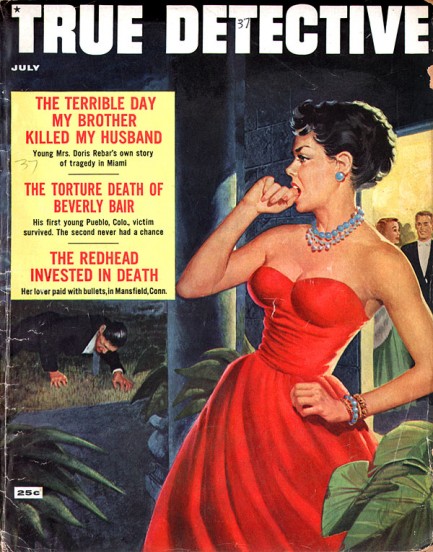
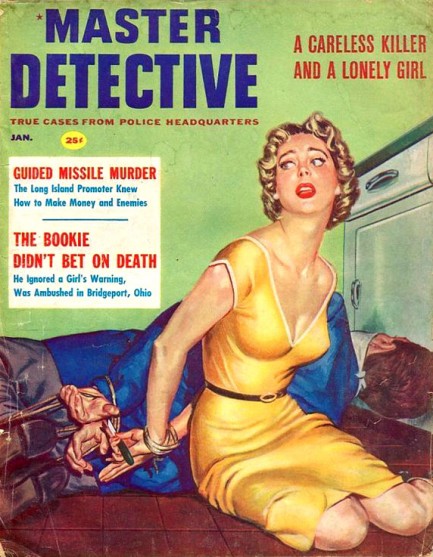
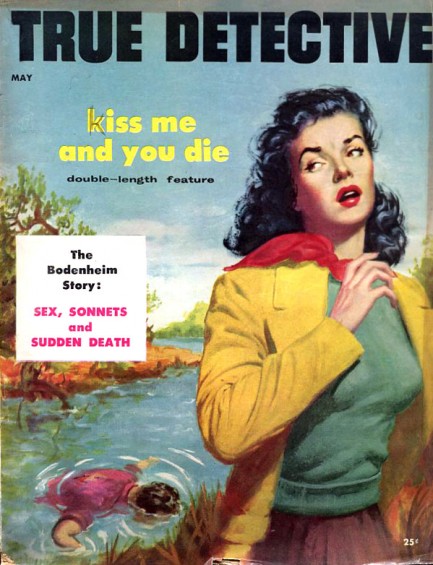
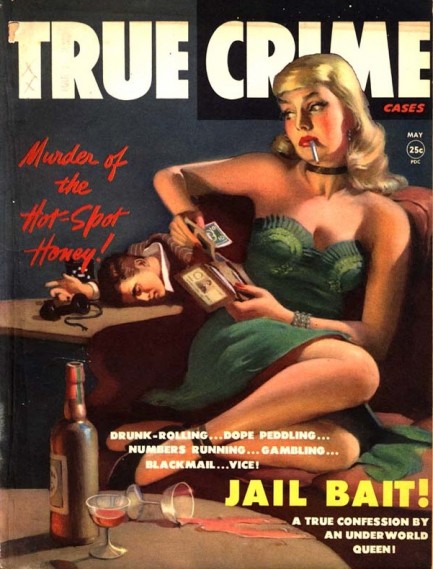
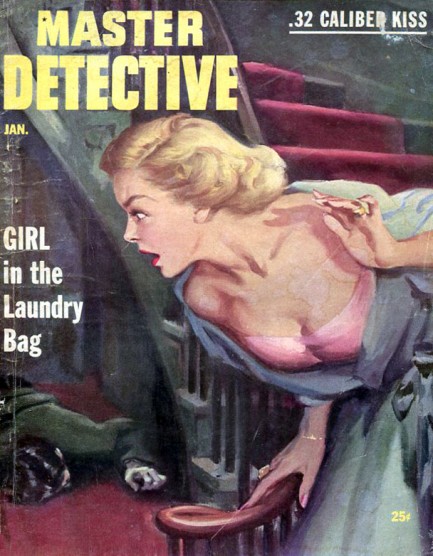
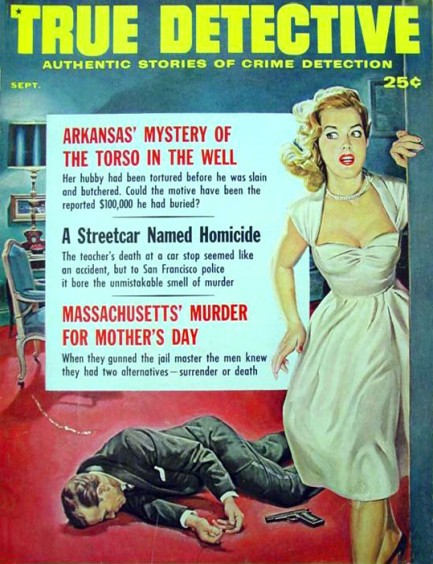
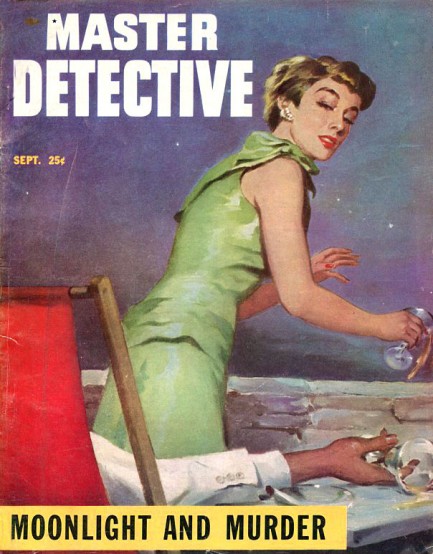
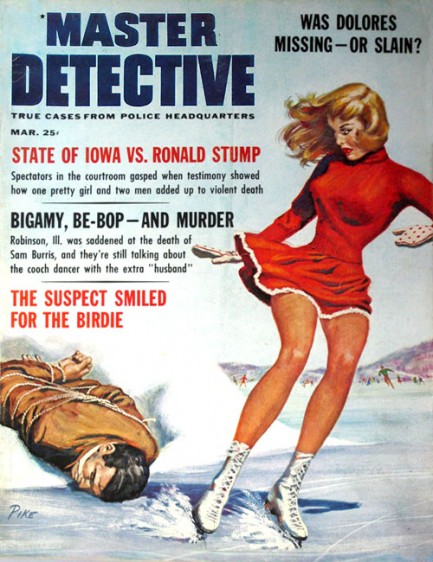
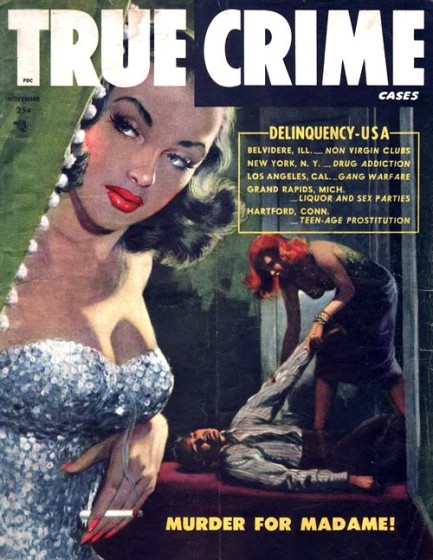
| The Naked City | Vintage Pulp | Nov 14 2011 |

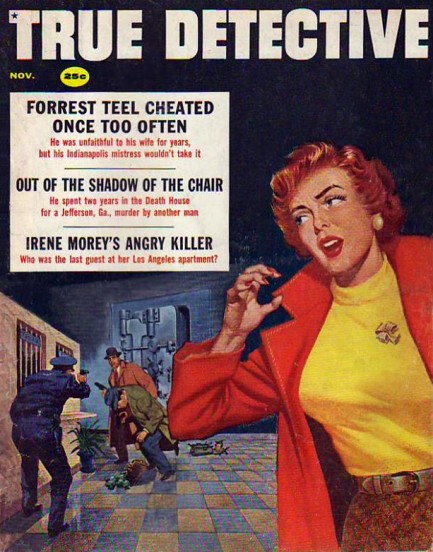
Above is a cover of True Detective from November 1958 and inside is a story on the murder of Irene Morey, a Los Angeles woman who was found strangled along with one of her two young sons. The murder was eventually pinned on a gas station attendant named Charles Earl Brubaker who had met Morey a few days earlier when she had car trouble. Either in gratitude or because she was romantically interested in him, Morey invited him to her place for dinner a few nights later, and the date went wrong. When Brubaker was in the middle of choking the life out of Morey, the older of her two sons walked in, so Brubaker strangled him too. Brubaker confessed to the murders and was tried, convicted, and sentenced to death in the gas chamber. That sentence was later overturned by Judge Joseph A. Wapner (who would become famous on his 1980s television show The People’s Court), and instead of seeing the inside of the death chamber Brubaker served hard time until his parole in 1976. After his release he faded from public view, but his crime never will because its aftermath is part of the USC Digital Library’s collection of more than 200,000 Los Angeles Examiner negatives. Irene Morey and her son appear below, in life and in death. We highly recommend you take a spin around USC's Examiner collection. There’s more dark and forgotten history in there than you can imagine.

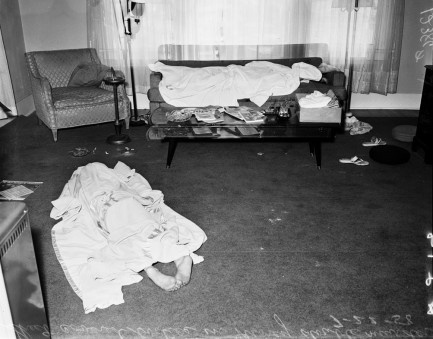
| Vintage Pulp | Oct 14 2011 |

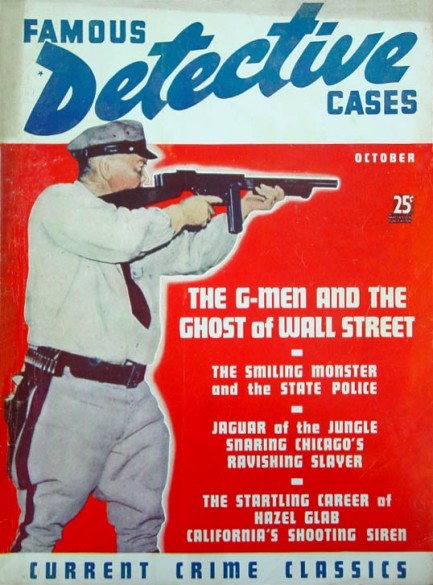
Above is a Famous Detective Cases from October 1936 with a cover featuring everyone’s worst nightmare—a smalltown cop with a big gut and a bigger gun. Among the articles is a detailed look at Hazel Glab, who was notorious for a while due to being accused of the murder of her wealthy husband John. Police initially couldn’t make a case against Glab, which of course left the press to speculate and theorize. When we were looking at some of those old articles we found several illustrations, including a smoking gun art piece from an April 1930 Milwaukee Sentinel, of which we’ve posted a portion below. There was also a photo of a detective re-enacting John Glab's last moments, with another smoking gun, and we’ve posted that too. Hazel Glab did eventually go to jail—at first it was for forging her husband’s will, but in January 1936 prosecutors indicted her for second degree murder. Glab was paroled in 1943, but she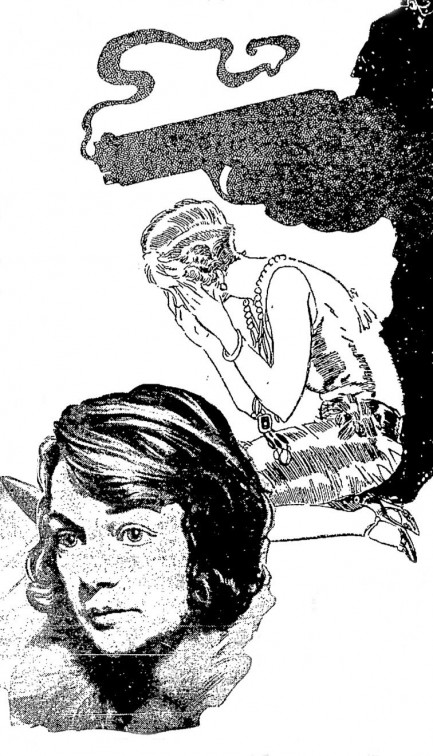
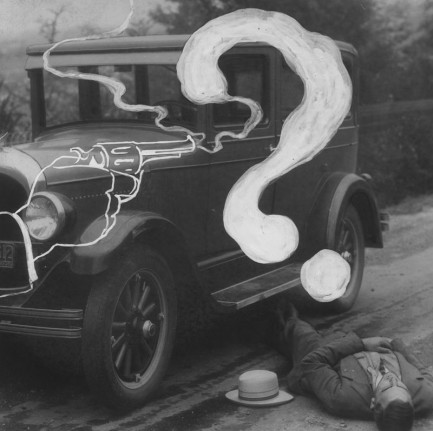 made news again in 1945 for a domestic incident, in 1958 when she was hauled into court on pandering charges, and yet again in 1965 when she was charged with making threatening phone calls. There are other stories as well—like the time she shot a man in the face for “insulting” her. Glab died in 1977, but perhaps we’ll get back to her a bit later. There’s certainly enough material.
made news again in 1945 for a domestic incident, in 1958 when she was hauled into court on pandering charges, and yet again in 1965 when she was charged with making threatening phone calls. There are other stories as well—like the time she shot a man in the face for “insulting” her. Glab died in 1977, but perhaps we’ll get back to her a bit later. There’s certainly enough material.
 |
 |




































































